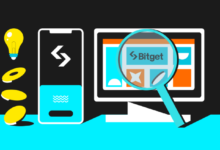
Leveraging Technology for Efficient Payroll Management Practices
Key Takeaways:
- Embracing modern technologies is essential for efficient payroll management.
- Effective payroll systems ‘ integration and compliance with the latest regulations are crucial features.
- Data security must be a top priority to protect sensitive payroll information.
- Staying updated with emerging technologies can provide significant advantages in payroll processing.
Table of Contents:
- Introduction to Payroll Efficiency
- The Evolution of Payroll Systems
- Payroll Software and Integration
- Compliance and Regulatory Considerations in Payroll Management
- The Role of Analytics in Payroll Management
- Employee Self-Service Portals and Payroll
- Automation and AI in Modern Payroll Processes
- Ensuring Data Security in Payroll Systems
- Future Trends and Innovations in Payroll Technology
- Conclusion
Introduction to Payroll Efficiency
The significance of efficient payroll systems in modern businesses cannot be overstated. They are the backbone of a satisfied workforce, ensuring employees are paid accurately and promptly. In the digitized business landscape, tapping into effective payroll services powered by technology is not just an option but a necessity. Implementing robust payroll systems helps companies streamline operations, cut costs, and avoid the pitfalls associated with manual payroll processing. Armed with cutting-edge software, companies are now equipped to handle the complexities of modern compensation packages, including various bonuses, allowances, and incentive plans, with greater ease and precision.
The Evolution of Payroll Systems
From the trying days of hand-written checks to the epitome of efficiency through digital transactions, payroll systems have undergone a significant transformation. This evolution has been propelled by technological advances to enhance precision and expedite the payroll process. Automation has replaced countless hours of manual calculations, allowing payroll professionals to focus on strategic activities such as employee benefits management and compliance strategy. Technology has not only simplified data entry and calculations but has also brought about advancements in tax filing processes, thereby reducing the occurrence of potentially costly errors. As these systems continue to evolve, we observe an intensifying focus on user experience and accessibility, ensuring that the software is both intuitive and capable of meeting the demands of a dynamic workforce.
Payroll Software and Integration
A cornerstone feature of any modern payroll software is its ability to integrate seamlessly with other essential business systems. Such integration ensures department accuracy, minimizes data entry errors, and streamlines employee onboarding, attendance tracking, and benefit administration processes. A payroll solution should serve as a central hub for all employee-related data, providing a single source of truth and enabling strategic HR planning. Cloud-based solutions offer additional advantages, such as facilitating mobile access and allowing employers and employees to manage payroll-related tasks remotely, an essential capability in the increasingly flexible working environments post-pandemic.
Compliance and Regulatory Considerations in Payroll Management
Navigating the legal intricacies of payroll taxes and labor laws can be daunting for any business. Missteps in this arena can lead to hefty fines and legal issues. Modern payroll solutions address this by automatically updating their systems to comply with the latest regulatory requirements. This feature reduces the chances of penalties and enables businesses to invest their resources into growth and development rather than constantly playing catch-up with changing regulations.
The Role of Analytics in Payroll Management
An analytics-driven approach to payroll management can unearth valuable insights that drive more intelligent business decisions. Payroll data analytics enable HR and finance teams to craft comprehensive reports on wage trends, overtime costs, and departmental budget allocations, informing strategic planning and decision-making. Predictive analytics can forecast future payroll expenses based on historical data, allowing for more accurate financial planning. Insights from analytics can identify opportunities for cost savings, inform budgeting decisions, and help develop competitive compensation strategies that attract and retain talent.
Employee Self-Service Portals and Payroll
Employee empowerment is a critical trend in modern HR management, and self-service payroll portals are a testament to this. These platforms allow employees to access their pay stubs, tax documents, and benefits information anytime, increasing transparency and trust within the organization. It means a reduced administrative burden for HR departments as the need for manual assistance with these tasks diminishes. It also mitigates the risk of errors associated with manual data entry by HR staff. It allows real-time updates to personal information by employees, ensuring up-to-date and accurate payroll records.
Automation and AI in Modern Payroll Processes
Implementing automation in payroll systems goes far beyond convenience; it fundamentally enhances accuracy and efficiency. AI and machine learning are now being deployed to identify patterns, predict outcomes, and flag inconsistencies, thereby mitigating the risk of payroll fraud and compliance issues. The automation of repetitive tasks, like payroll calculations and tax withholdings, liberates payroll professionals to focus on more impactful work, such as employee engagement and strategic planning.
Ensuring Data Security in Payroll Systems
With the rise of cyber threats, data protection has become a critical aspect of payroll management. Payroll systems hold sensitive personal and financial information that, if compromised, could put both employees and the company at risk. Modern payroll systems employ robust security measures like end-to-end encryption, secure login protocols, and regular compliance audits to safeguard against unauthorized access and data breaches. These protective measures are imperative in maintaining the integrity and confidentiality of payroll data.
Future Trends and Innovations in Payroll Technology
The future landscape of payroll technology is promising, with breakthroughs such as blockchain and cryptocurrency gaining attention. These innovations can optimize payroll processes further, enhance security, and reduce transaction costs, signaling a new era in payroll management. As new technologies emerge, businesses must remain receptive to advancements and consider how they can be leveraged for payroll efficiency.
Read also Ensuring the Longevity of Your Portable Dab Rig: Cleaning and Maintenance Guide
Conclusion
In conclusion, mastering payroll efficiency through technology is not just a strategic advantage but a necessity in today’s business environment. Technology is essential in payroll, from addressing complex regulatory requirements to ensuring data security. By embracing these technological solutions, businesses can harness the full potential of their payroll systems, resulting in streamlined operations, enhanced accuracy, and improved employee satisfaction.






